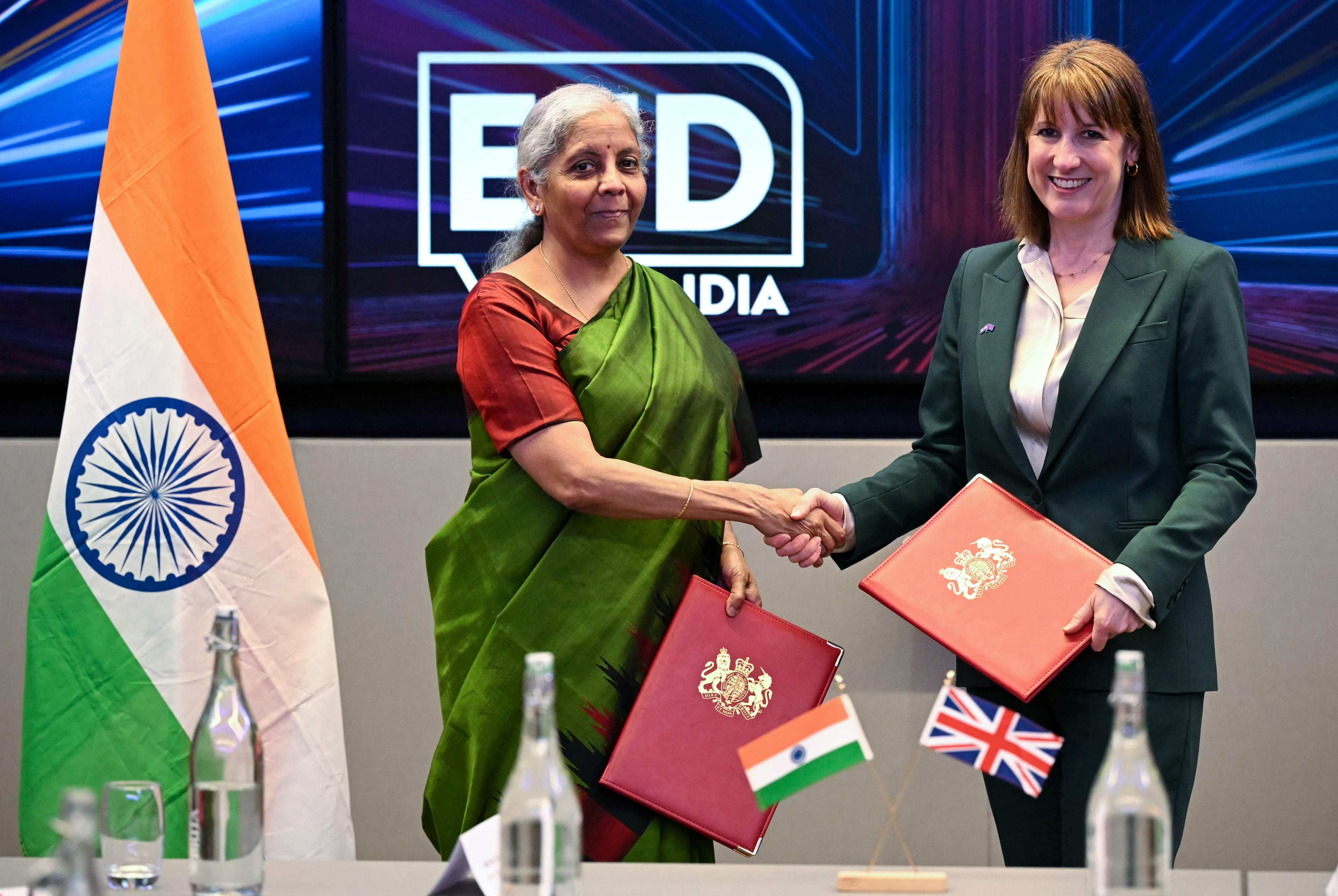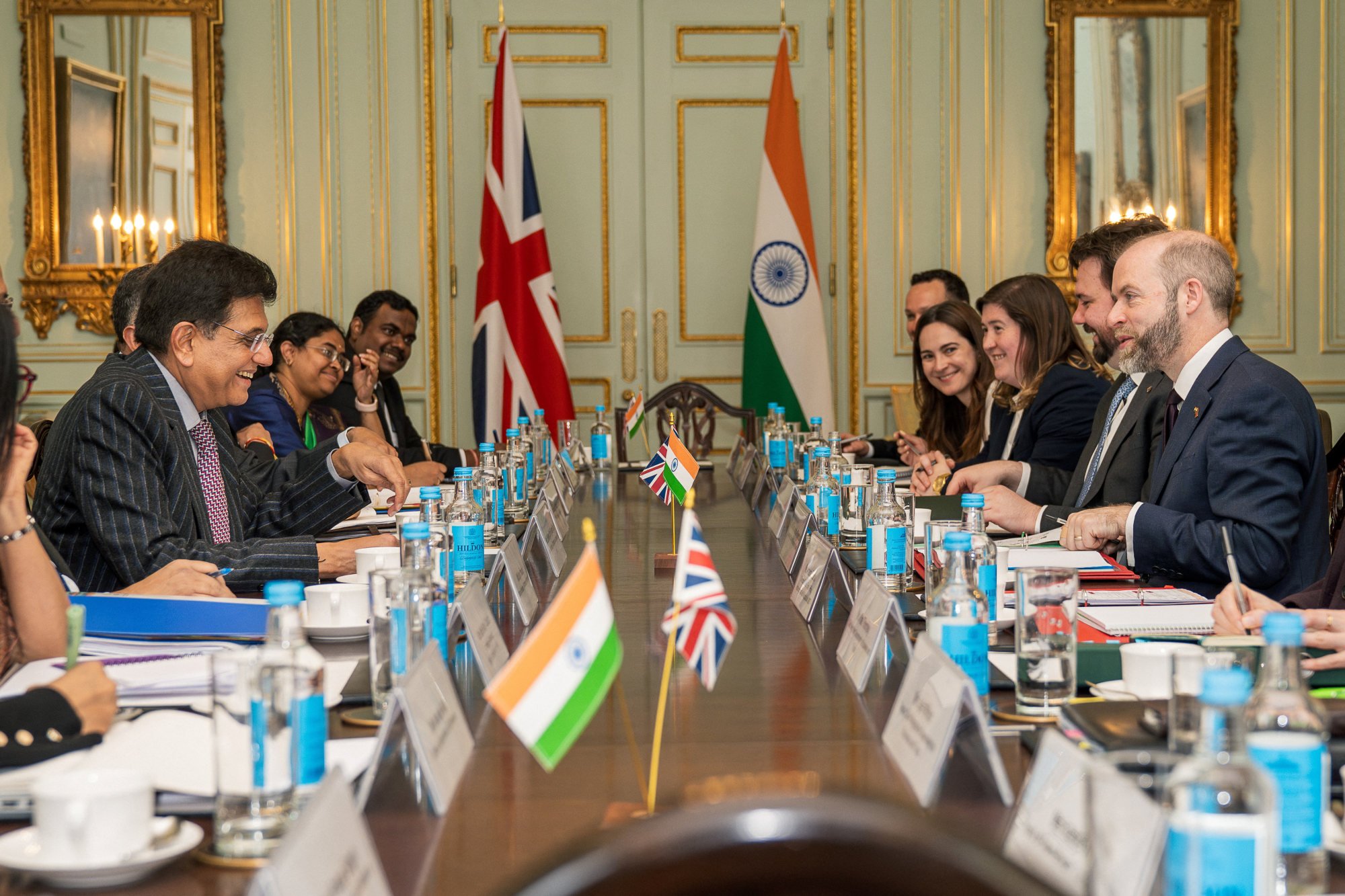How the India-UK trade deal could shape future pacts with the EU and US
Analysts say the free-trade deal, expected to be finalised this week, signals New Delhi’s shift away from protectionism

India and Britain are poised to sign a long-awaited free-trade agreement during Prime Minister Narendra Modi’s visit to London this week, a deal analysts see as a signal that New Delhi is willing to shed its traditionally protectionist stance and engage more deeply with Western partners amid rising global trade tensions.
The pact, which follows three years of negotiations, is expected to be finalised during Modi’s bilateral meeting with British Prime Minister Keir Starmer, which begins on Wednesday. According to Indian officials, the two leaders will also review the India-UK Comprehensive Strategic Partnership and discuss matters related to security and technology.
British estimates project the deal will boost bilateral trade by £25.5 billion (US$34.13 billion) annually by 2040. Trade between the two countries reached £42.6 billion last year, making India the UK’s 11th-largest trading partner.
“I think this [India-UK FTA] is also about signalling from India that it is open to better integrating with the global economy – that it is ready to sign difficult trade agreements,” said Harsh Pant, a professor of international relations at King’s College London.
If approved by the British parliament and India’s federal cabinet, the agreement would take effect within a year, removing trade barriers and granting duty-free access to most goods.

India has had a mixed track record with free-trade agreements, with several deals over the past two decades leading to persistent trade deficits and, in some cases, domestic backlash from industries and states concerned about import surges.
Experts say New Delhi will need to strike more trade agreements to help buffer against global market volatility, especially as US President Donald Trump is set to impose steep new import tariffs on several countries – including India – from August 1.
India was among more than 50 nations notified by the White House in early July that new duties would take effect unless trade deals were reached. Its exports could face baseline tariffs of up to 26 per cent, with steeper sector-specific levies expected on goods such as steel, aluminium and pharmaceuticals.
One way India could secure more favourable terms is by leveraging the scale of its domestic market. According to British government estimates, India’s middle class is projected to reach 60 million by 2030 and could expand to around 250 million by 2050. Its import demand is expected to rise by 144 per cent in real terms, reaching around £1.4 trillion by 2035 compared with 2021 levels.
Pant said the India-UK FTA “is an important signal to other constituencies like the EU and the US, with whom negotiations are pending”.
Under the UK agreement, India will reduce duties on 90 per cent of British goods, including machinery, medical devices and alcoholic beverages. Of these, 85 per cent are set to become tariff-free within a decade.
Tariffs on whisky and gin will drop from 150 per cent to 75 per cent, eventually falling to 40 per cent by year 10. Car tariffs – currently over 100 per cent – will be cut to just 10 per cent.
India’s commerce ministry said the deal would eliminate duties on 99 per cent of Indian exports to Britain, including key sectors such as textiles. In return, tariffs would be reduced or removed on 90 per cent of British products covered under the agreement.
Unhandled type: inline-plus-widget {“type”:”inline-plus-widget”}
Anna Shotbolt, deputy trade commissioner for South Asia at the British High Commission, told a meeting of the PHD Chamber of Commerce and Industry (PHDCCI) last week that the deal would also support more transparent and secure cross-border working arrangements, extending beyond trade to encompass labour standards and digital collaboration.
Ranjeet Mehta, CEO and secretary general of PHDCCI, said the agreement would open up new opportunities for Indian small and medium-sized enterprises, particularly those focused on sustainability and technology.
Expanding ties
The relationship between the two countries is likely to expand in other areas such as security partnerships, Pant said.
Priyajit Debsarkar, a London-based author who specialises in South Asia, said the goodwill generated by the trade pact could unlock future collaboration in areas ranging from missile systems to space exploration.
In February, the two countries agreed to deepen defence ties by launching a new cooperation framework that includes joint development of missile systems, the establishment of assembly and testing facilities, and collaboration on electric naval propulsion technologies.
India already has a long-standing history of defence acquisitions from the UK, including the aircraft carriers INS Vikrant and INS Viraat, Sepecat Jaguar attack aircraft and Westland Sea King anti‑submarine helicopters.
That cooperation was underscored again last month, when a British F-35B stealth fighter made an emergency landing in southern India’s Kerala state. The jet – among the world’s most sophisticated – remained grounded for weeks, undergoing on-site repairs with Indian assistance before its scheduled take-off on Tuesday.
That it was serviced in India, despite the sensitivity of its technology, was viewed as a sign of deepening trust between the two partners.